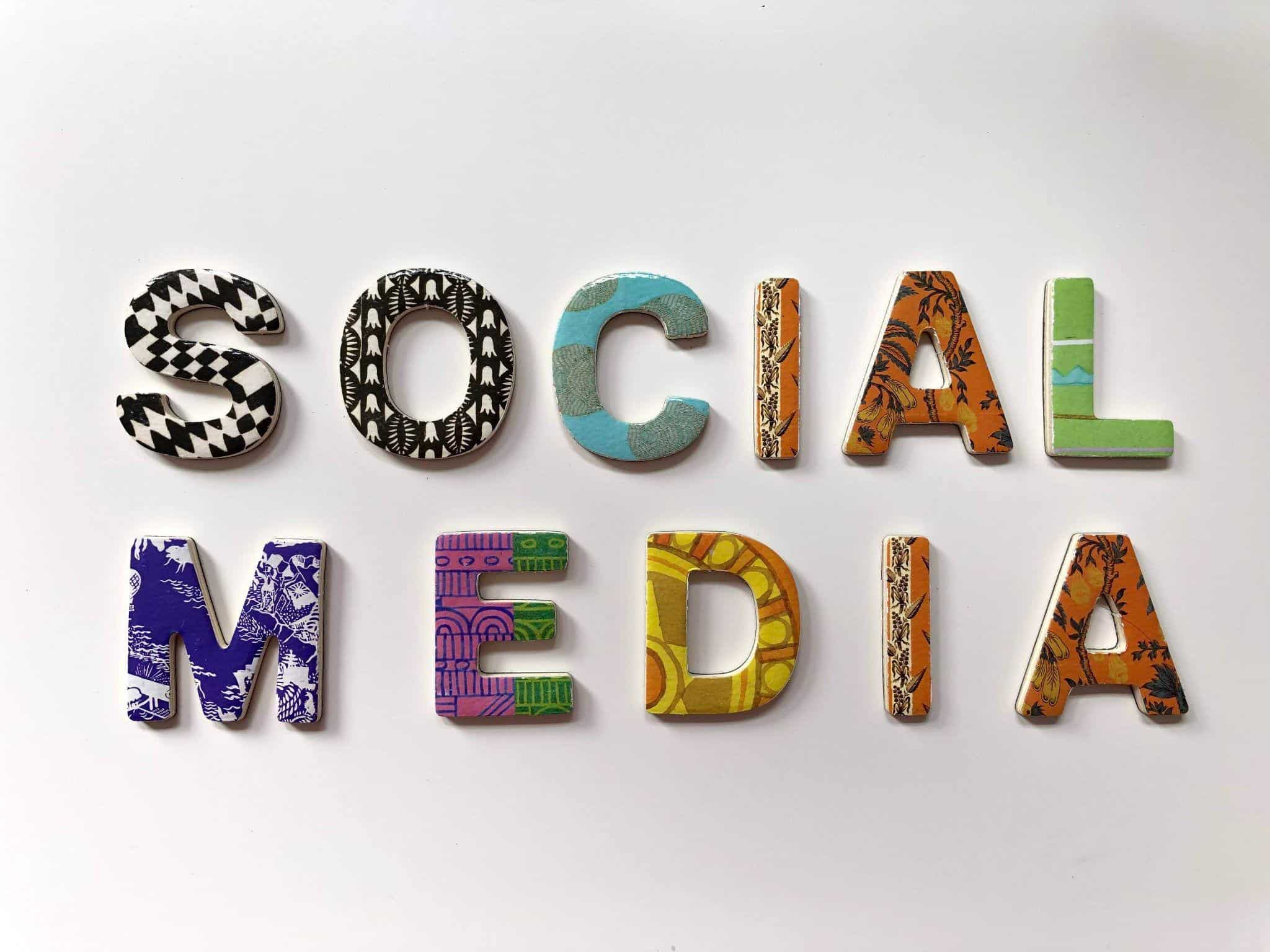Over the years, social media has changed the way we consume and produce content. Thanks to major platforms such as Twitter, Instagram, and TikTok, writers are now able to share their work with a wider audience and engage with readers in real time.
In the context of marketing and outreach, social media has become a vast playground for companies looking to spread the word about their brands through engaging and creative content.

© Unsplash
The ever-changing nature of social media, however, can be daunting for writers, who are expected to produce a large volume of content that is both captivating and effective. Among other key factors, creative writing on social media has to adhere to the rules of SEO in order to stand out and rank higher in search results.
In this article, we will cover how to use creative writing with AI for social media to supplement creative writing outputs on social media. Does the future spell more AI-developed content, or something else entirely?
How Do AI Writing Tools Work?

© Unsplash
AI writing tools like ChatGPT, Magic Write, Jasper, and QuillBot have become incredibly popular among writers, bloggers, and social media marketers who want to produce a great amount of quality content quickly and efficiently.
In essence, these tools rely on complex algorithms and processing techniques to generate human-like text. The writing outputs of an AI tool are produced by analyzing vast amounts of text data and using that data to produce new content.
While the exact workings of AI writing tools can vary depending on the specific tool and algorithm used, they all generally follow these basic steps:
- Data collection. AI writing tools start by collecting large amounts of textual data, which can come from a variety of sources, including books, articles, news, and social media posts. Programmers use these so-called data sets to train the AI tool’s algorithm, giving it a basis for generating new content.
- Natural language processing. Once the AI tool collects the data, it uses natural language processing methods to analyze it in the context of the prompt the user gives it. Natural language processing involves breaking down the text into its constituent parts, such as words and phrases, and then analyzing how those parts fit together to create meaning.
- Pattern recognition. The AI algorithm also looks for patterns in the textual data, such as common phrases or sentence structures, that it then uses to generate new content to fit within the style and tone of the original data. It is important to note that AI writing tools sometimes fail to provide accurate content in favor of adhering to a certain style or sentence structure.
- Content production. With these patterns and styles in mind, the AI writing tool produces new content. Depending on the article writer and what the user needs, this content could include anything from short headlines and video captions to blog posts and even longer articles.
- Editing. Finally, today’s AI writing tools are able to provide tips for editing and reviewing the generated content. This feature normally entails suggestions on how the writer can improve the grammar and style, as well as tools to check for plagiarism and readability.
How Does AI Help Creative Writing for Social Media?

© Unsplash
With the rise of AI-powered content generation tools like ChatGPT, companies and individuals are now able to easily overcome some of the challenges of creative writing for social media. Some of the ways writers use AI in creative writing today include:
- Prompting ideas. Writers and content creation teams can use AI tools to come up with ideas for creative writing projects they plan to post on social media. Many AI-powered writing tools are able to analyze specific writing criteria and inputs, in order to suggest topics or themes that brands can explore within their niche.
- Content creation. Generating headlines, captions, and even entire articles or social media posts has become one of the primary uses of AI writing tools for social media marketing. An AI post generator like ChatGPT or Jasper can churn out incredible amounts of content tailored for social networks in just a few moments, after which teams only need to tweak and fine-tune the produced outputs.
In addition to this, more and more content creators are repurposing live streams and turning them into blog posts using AI tools. This strategy allows them to maximize the reach and impact of their content, making the most out of their efforts.
- Editing and proofreading. Writers can also use AI tools to edit and proofread human content; AI provides writers with suggestions on grammar, spelling, and style. Moreover, AI essay writing platforms can assist students in crafting well-structured and articulate essays, improving their writing skills․ This feature not only speeds up the book editing process itself but also improves the quality of the content that writers create.
- Customer segmentation. AI algorithms are now able to analyze user data and generate tailored content for individual users based on their interests and preferences, helping with customer segmentation and better-targeting efforts.
As we can see, AI already plays a significant role in creative writing for social media, though there is still much room for growth and innovation in this field; more on that below.
The Downsides of Using AI Writing Tools

© Unsplash
Although many now use the word “revolutionary” in the context of AI-generated writing for social media, there are still several glaring downsides to consider. These downsides already hamper the usefulness of AI-powered tools—though the good news is that the technology is still in its infancy and constantly evolving.
One of the biggest concerns associated with using an AI content writer for social media is that the technology available is still limited to creating quite formulaic and generic content.
When given a prompt, an AI writing tool such as ChatGPT uses the inputted data to produce content that meets the criteria it has analyzed through the prompt. Often, this process results in outputs that lack creativity, as well as a distinct tone of voice to capture audiences. If people were to rely purely on AI-generated posts, it would lead to a severe lack of diversity in the content on social media platforms.
Moreover, AI algorithms are only as good as the data sets they are trained on, which can lead to bias in content creation. An AI tool trained on data sets that primarily feature a specific demographic may produce text that is insensitive or inappropriate for other demographics, leading to significant ethical concerns and negative social impacts if left unchecked by a human.
Another downside we’re seeing more of is that the use of AI in creative writing may lead writers to become overly reliant on technology. As mentioned above, this reliance can lead to a decrease in creativity and originality, especially in the case of poor quality control. As AI-generated content becomes more prevalent, it will become necessary to implement effective quality control mechanisms.
Will AI Replace Human Creative Writers?

© Unsplash
The potential of AI in creative writing for social media is immense, and we can expect to see a wide range of advancements in this technological field in the coming years. However, as it stands, there are still several reasons why human-created content remains superior to AI-generated outputs.
Above all, human-created content is inherently unique as it is based on personal experiences, perspectives, know-how, and emotions. When paired with good style and tone of voice, traditionally-made content is able to resonate with readers and draw in audiences on social media usually better than any AI.
The kind of content produced by ChatGPT and its peers is always generated based on conclusions drawn from pre-programmed data sets—data sets full of content produced by humans—making it lack the spontaneity and creativity of traditional content. Without any of the necessary fine-tuning, this lack of uniqueness is still what clearly sets good-quality content apart from mediocre, computer-generated text.
Secondly, human-created content is often much more accurate and, therefore, higher in value. The information that human writers produce is based on real-world, up-to-date knowledge and research. And yes, human-created content can absolutely vary in its quality, but there is a greater potential for a high-quality outcome than with AI-generated content that often produces overly simplified outputs, especially with vague inputs and not enough material to source its own outputs from.
Moreover, creative writers have a deep understanding of context and subject matter that AI simply does not have—yet. AI tools may have access to vast amounts of data, but they cannot understand the subtleties and nuances that come with being familiar with specific contexts, human experiences, and subject matter.
Therefore, the question of whether AI is able to replace human writers as of right now can still be answered with a resounding “no.”
The Future of AI in Creative Writing for Social Media

© Unsplash
It’s no secret that AI writing tools have made significant strides in recent years, with enormous implications for social media marketing, where content creation plays a critical role in building brand awareness and engaging with audiences.
Although we’re clearly not there yet, developers and marketing experts see the potential of AI in creative writing going far beyond just saving time and effort. In fact, the hope right now is that it will revolutionize the way we approach content creation altogether.
Just a couple of years ago, it would have been difficult to imagine a scenario where a brand could input a set of parameters into an AI writing tool, such as the tone, style, and target audience, and have the tool generate a fully fleshed-out campaign complete with social media posts, video scripts, and email newsletters.
ChatGPT can already complete the majority of these tasks in the blink of an eye; it’s merely a matter of reviewing the ideas it generates and fine-tuning them accordingly.
Since we understand why it is difficult to replace human writers with an AI text generation tool, developers should predominantly focus on certain abilities of AI tools to streamline and supplement the writing process.
Here’s a good example of this angle: AI already personalizes content and improves SEO. By working to better the technology behind customer data and behavior analysis, AI could generate content that is perfectly tailored to individual preferences and needs, resulting in a more engaging and personalized experience for the customer.
We are bound to see more of these kinds of supplementary capabilities in the future.
Leveraging Creative Writing with AI for Social Media
In this article, we have explored the potential of AI to complement the creative writing process for social media. Though currently able to effectively provide writers with excellent solutions that can enhance their creativity and productivity, there are still many challenges and limitations associated with the use of AI in the field of creative writing and social media marketing.
Ultimately, the future of creative writing with AI for social media depends on how we choose to use this technology. When used wisely and responsibly, with the right amount of quality control, AI can help us create more engaging, personalized, and effective content that resonates with our audience.
However, if professional writers and entire marketing teams rely too heavily on AI and neglect to work on the aspect of originality that only humans can bring to the table, they risk losing the very essence of what makes creative writing so powerful and inspiring.
Despite these challenges, the future of AI in creative writing for social media is undoubtedly promising, and we can expect to see AI-generated content become an increasingly integral part of the social media content landscape.

